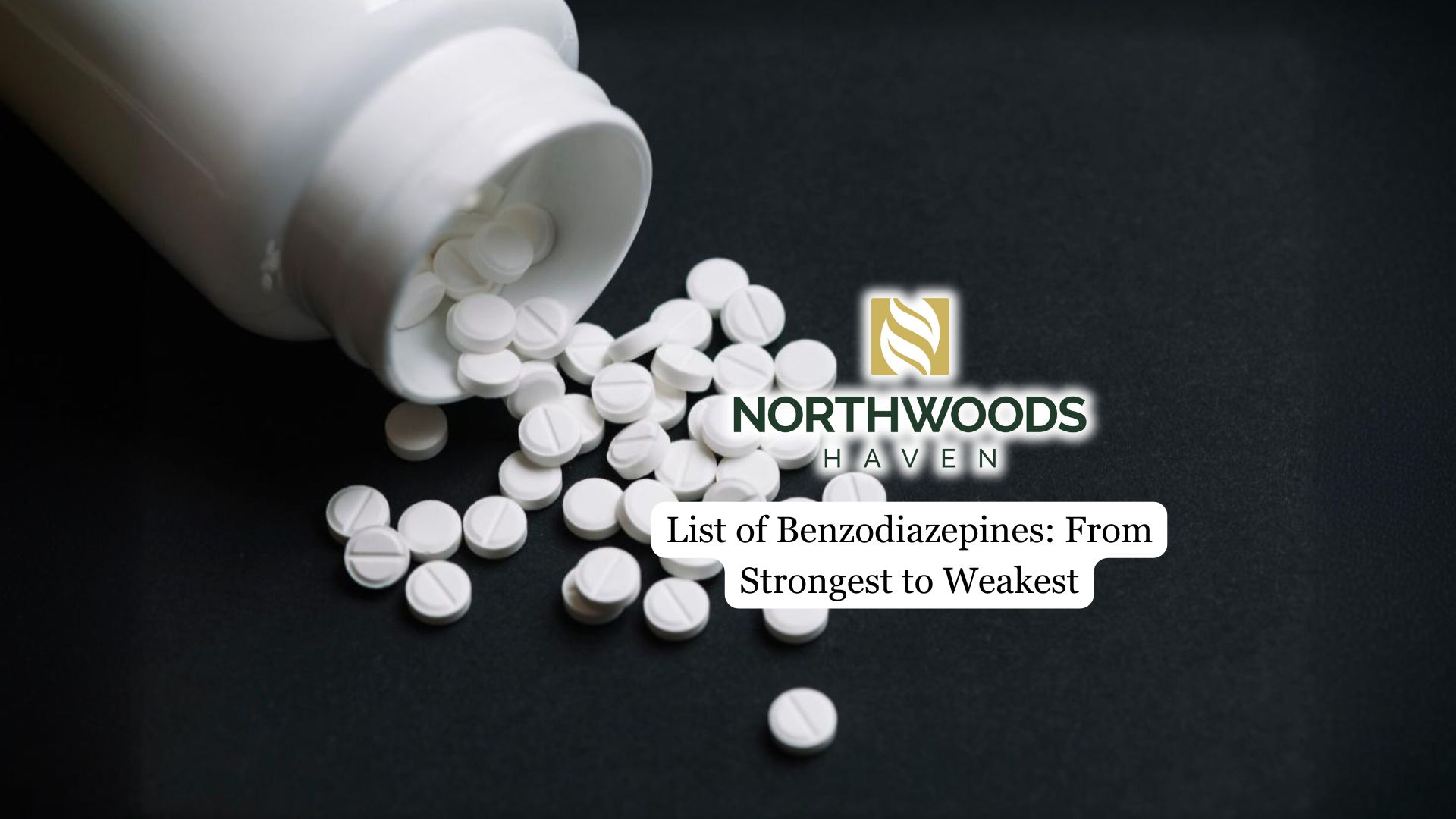Benzodiazepines, a class of psychoactive drugs that are widely prescribed for anxiety, insomnia, and seizures, vary significantly in their potency and duration of action. It is crucial for both medical professionals and patients to understand the relative strength of different benzodiazepines, as it impacts dosing, potential side effects, and the risk of dependence.
This article aims to provide a comprehensive overview of benzodiazepines, ranking them from strongest to weakest based on factors such as potency, half-life, and onset of action.
Factors Determining Benzodiazepine Strength
Potency refers to the drug’s ability to produce therapeutic effects at lower doses.
The elimination half-life also plays a role, as shorter half-lives usually indicate higher potency and quicker onset of effects.
Individual factors like weight, age, gender, and overall health can affect how a benzodiazepine is metabolized and its perceived strength.
The presence of active metabolites can extend the duration of effects, impacting overall potency.
It’s important to note that higher potency benzodiazepines are often associated with a greater risk of dependence and withdrawal symptoms due to their intense effects and shorter duration of action, emphasizing the need for careful prescribing practices tailored to each patient’s unique needs and medical history.
These medications can lead to both physical dependence and psychological addiction, particularly with long-term use beyond four weeks or when taken in high doses. Seeking professional benzo addiction treatment program is crucial for overcoming benzodiazepine dependence.
Strongest Benzodiazepines
High-potency benzodiazepines are a class of benzodiazepine medications known for their strong effects at lower doses. These drugs usually have a rapid onset of action and are considered more potent because they can quickly produce significant sedative, anti-anxiety, and muscle relaxant effects.
High-Potency, Long-Acting Benzodiazepines
- Clonazepam (Klonopin) is regarded as one of the most potent benzodiazepines due to its high strength and long-lasting effects, with a half-life spanning from 18 to 50 hours.
- Flunitrazepam (Rohypnol) is renowned for its powerful sedative properties and is roughly 15 times more potent than diazepam.
- Nitrazepam is a potent, long-acting benzodiazepine with strong hypnotic and sedative effects. It has a quick onset of action, usually taking effect within 30 to 60 minutes, and induces sleep lasting six to eight hours.
High-Potency, Short-Acting Benzodiazepines
- Alprazolam (Xanax) is a prime example of a benzodiazepine with a half-life of 6-15 hours and an intermediate speed of onset. It is widely prescribed for anxiety disorders and panic attacks due to its quick-acting nature.
- Lorazepam (Ativan) has a half-life of 10-20 hours and is often used for acute anxiety and as an adjunct to antipsychotics for treating acute agitation.
- Triazolam (Halcion) is also in this category, with an extremely short half-life of about 1.5 hours, making it particularly useful for the short-term treatment of insomnia.
- Midazolam, while not as commonly prescribed for outpatient use, is a highly potent, short-acting benzodiazepine with a half-life of 1.5-2.5 hours, often used in medical procedures for its rapid onset and short duration of action.
Medium-Potency Benzodiazepines
They’re typically prescribed for less severe cases of anxiety or sleep disturbances, offering a balance between efficacy and lower addiction potential compared to high-potency options. Clobazam (Onfi) is a notable example, demonstrating effectiveness while being less addictive than its high-potency counterparts.
These medications are characterized by a more gradual onset of effects, making them suitable for long-term use. Medium-potency benzodiazepines generally carry a lower risk of severe withdrawal symptoms, making them a safer choice for some patients.

Weakest Benzodiazepines
Low-potency, short-acting benzodiazepines are ideal for treating acute anxiety or insomnia without causing prolonged sedation. They provide a more sustained effect, making them suitable for managing chronic anxiety disorders.
Low-Potency, Short-Acting Benzodiazepines
- Oxazepam (Serax), with a half-life ranging from 5 to 10 hours, is known for its slow onset of action, which makes it less likely to be abused compared to more potent benzodiazepines.
- Temazepam (Restoril) has a half-life of 3.5 to 18.5 hours and is primarily used as a short-term treatment for insomnia.
These medications are often prescribed for elderly patients or those with mild symptoms due to their reduced risk of side effects and lower potential for dependence compared to high-potency benzodiazepines.
Low-Potency, Long-Acting Benzodiazepines
- Chlordiazepoxide(Librium) is commonly prescribed for treating anxiety disorders, symptoms of alcohol withdrawal, and preoperative anxiety. With a half-life of 24–48 hours, it produces a calming effect on the brain and nerves, making it suitable for long-term management of symptoms.
- Clorazepate (Tranxene) is metabolized into desmethyldiazepam, which has a very long half-life of 20–179 hours. It is prescribed for anxiety, alcohol withdrawal, and epilepsy, providing sustained therapeutic effects due to its active metabolite.
- Diazepam (Valium) is widely prescribed for anxiety, muscle spasms, seizures, and alcohol withdrawal. With a half-life of 20–80 hours, it provides long-lasting relief and is often used as an adjunct in the management of convulsive disorders.
- Flurazepam (Dalmane) helps with falling asleep and reducing nocturnal awakenings. Its active metabolite has a half-life of 47–100 hours, making it effective for extended periods but also prone to accumulation in the body.
Risks Associated with Potent Benzodiazepines
These potent medications can lead to abuse, dependence, and cognitive impairment with prolonged use. The risk of overdose rises dramatically when combined with alcohol or opioids, potentially causing respiratory depression.
Acute withdrawal from high-potency benzodiazepines may require medical detox due to dangerous symptoms like seizures. Side effects include emotional numbness, confusion, and increased risk of accidents, especially in older adults.
It’s crucial to weigh the benefits against the potential health effects when considering these powerful medications. Consult with a healthcare professional to determine if a high-potency benzodiazepine is appropriate for your specific situation and to discuss safer alternatives if necessary.
Final Thoughts from Northwoods Haven Recovery
At Northwoods Haven, located in Minneapolis, Minnesota, we provide a comprehensive treatment program for benzodiazepine addiction. Our program is designed to offer a safe withdrawal process and sustainable recovery. We use medically-supervised approaches and personalized treatment plans to address both the physical and psychological aspects of addiction. Our goal is to empower you to regain control of your life.



